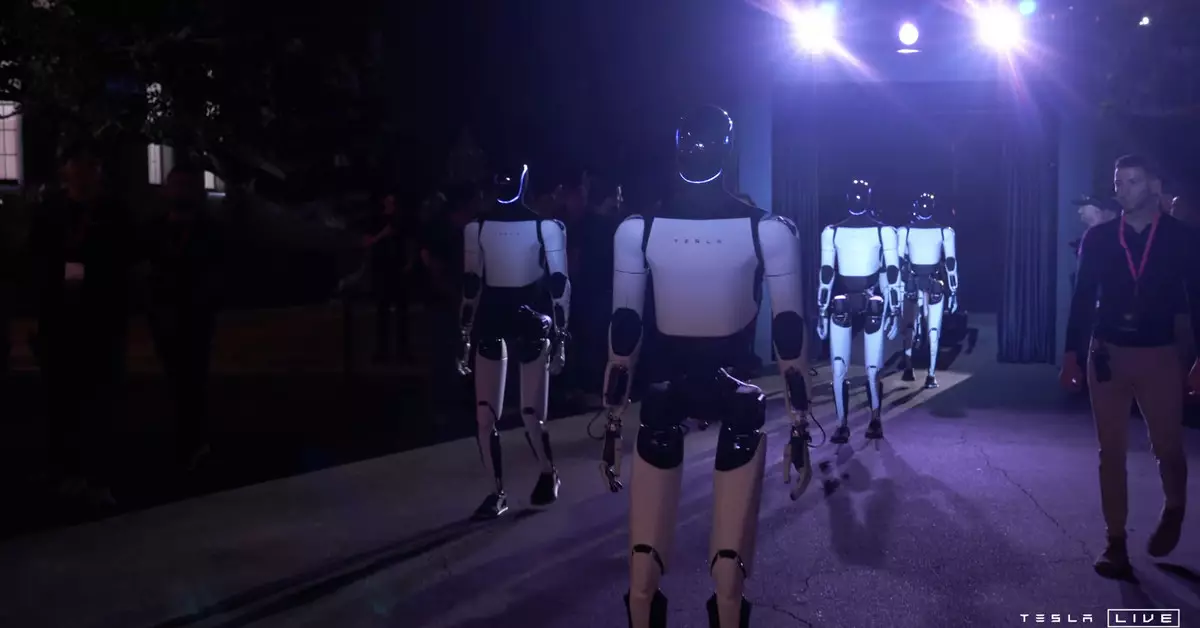Tesla’s ambitious foray into the realm of humanoid robotics has recently taken a leap forward, capturing the imagination of tech enthusiasts and skeptics alike. At Tesla’s Cybercab event, the unveiling of the Robovan was accompanied by a striking display of Optimus robots, offering a tantalizing glimpse into a future where these mechanical helpers could weave seamlessly into our daily lives. With discussions around their capabilities soaring, the critical examination of their practicality and immediate functionality has never been more pertinent.
Tesla’s CEO, Elon Musk, paints an ambitious picture of the Optimus. He claims these humanoid robots could perform an array of tasks typical of human capabilities—everything from fetching packages to walking dogs and serving drinks. With a projected long-term retail price between $20,000 and $30,000, the financial implications of integrating such technology into homes become a focal discussion point. Musk envisions these robot assistants as transformative, dubbing them “the biggest product ever of any kind.” This grand declaration invites scrutiny on whether these robots can genuinely live up to that monumental promise or if they represent more of a PR spectacle.
Show Don’t Tell: The Limitations of Presentations
Despite the hype surrounding the presentation, actual demonstrations of the Optimus robots leave much to be desired. While the initial impact of visually stunning robots walking alongside Tesla’s new vehicle cannot be overlooked, their limited interactions raise eyebrows. An event that showcased an Optimus robot’s capabilities included minor tasks, such as holding a cup of ice and briefly engaging in a game of rock-paper-scissors. These underwhelming demonstrations prompt questions about their real-world practicality. Are these robots designed merely as entertainment props rather than practical assistants?
It’s important to contextualize Tesla’s journey into robotics. Initially unveiled in 2021, the concept was met with skepticism, as the first presentation featured a performer clad in a robot suit capering about on stage. Progressing to a more sophisticated prototype a year later, the optimism surrounding the robot’s capabilities seemed to grow, with Musk claiming that significant task execution would commence by year’s end. Therefore, when we compare early iterations with the current showcase, one must consider whether Tesla is genuinely advancing the technology or merely indulging in spectacle.
Tesla’s vision for the Optimus humanoid robot captures an aspirational future facilitated by technology. However, the evidence presented thus far suggests that it has not yet evolved into something practically useful. As the tech community watches closely, the juxtaposition of ambitious claims against the scant evidence of functional capability raises concerns about whether Optimus will prove to be a practical helper or a symbol of overreaching ambition without substantial foundation. The narrative of autonomous helpers is undoubtedly appealing—the real challenge ahead is transforming that narrative into reality.

